
Lisa John Rogers
September 28, 2024
There’s something circuitous about seeing masses of textile art, in the old Boyer-Campbell Building, in the Milwaukee Junction neighborhood of Detroit. The building was once a factory and warehouse for an automotive supply company. The inventory slide is still situated in the middle of the first floor, as seen from the entrance. As are the interior windows, known as industrial observation windows, which serve utilitarian purposes: one known as “daylighting” which saves money by flooding the space with natural light, while also allowing upper management to keep on eye on things (workers).
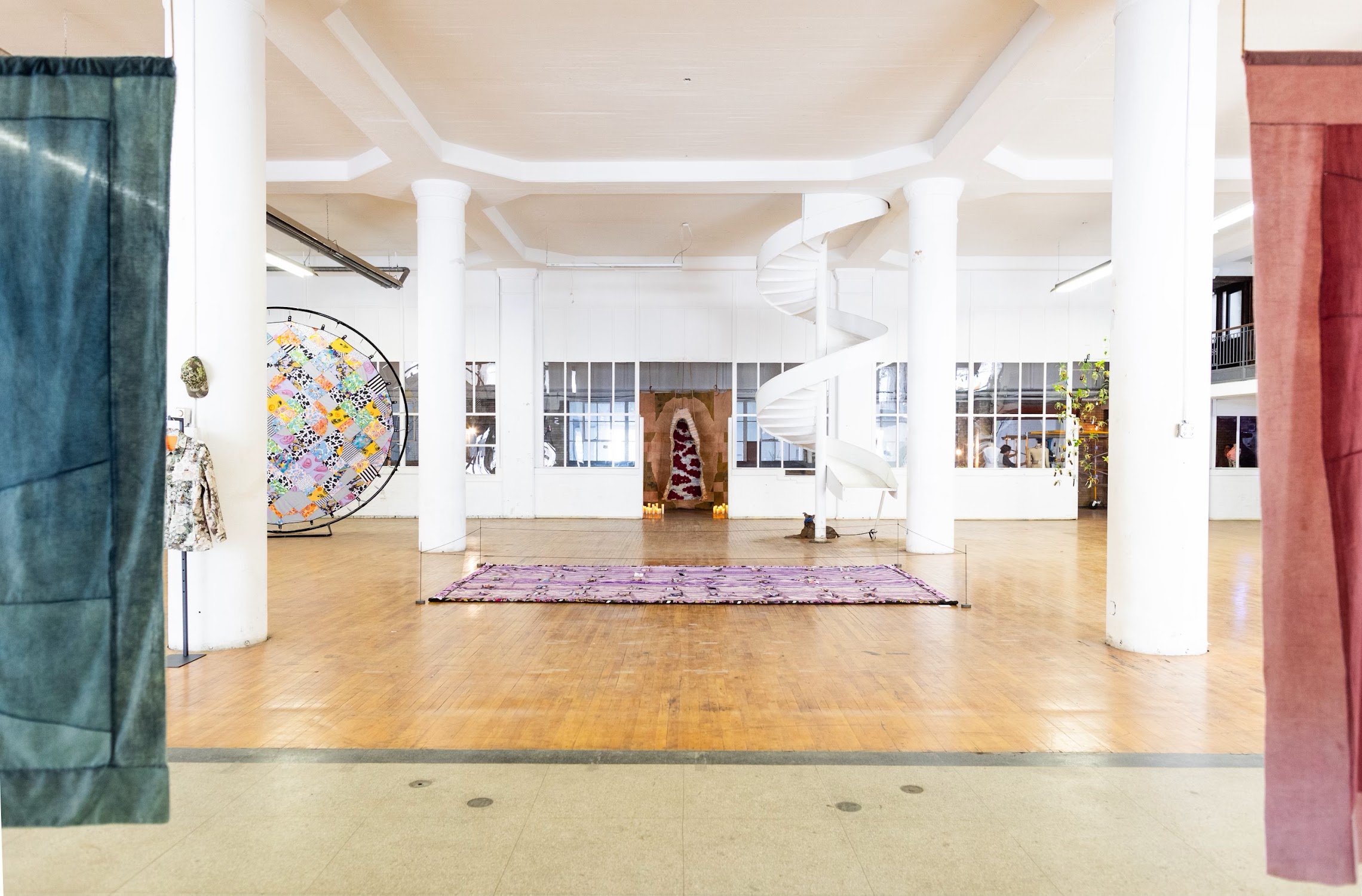
When the industrial age started in Great Britain in the mid-1700s, it was textiles that started as the first major industry. Before that, textiles were considered a craft, cottage industry with everything made by hand. When a group of weavers got together to smash power looms and burn down what were some of the world’s first factories, the Luddites formed. In Environment + Microclimates the textile artists have taken back the origins of this craft by taking over the factory.
The first time I was in the space, I was there for a reading. During the reading I noticed white, fluffy matter falling through the air like cottonwood seeds in early June. Strange to watch them floating to the concrete floor, as the ground is normally where seeds germinate. Here they just danced around until enough kinetic breeze pushed them into clumps, gathering around other works of art or where the wall meets the floor—like fluffy animal fur in a dusty house.
Surreal to watch them fall around Wild Flora Fiber Forest (2024) by Abigail Rist and Yaeger Edwards. Watching these seeds swirling around the fabric bases of these three large-than-life-sized flowers, feels like watching envy, like watching seeds desire for their potential transformation—like pre-teens staring at their older teenage siblings. The craftsmanship and absurdity of this particular installation felt reminiscent of Martin Kippenberger’s jetzt gehe ich in den birkenwald, denn meine pillen wirken bald (now I’m going to the birch forest because my pills will soon take effect,) 1991.
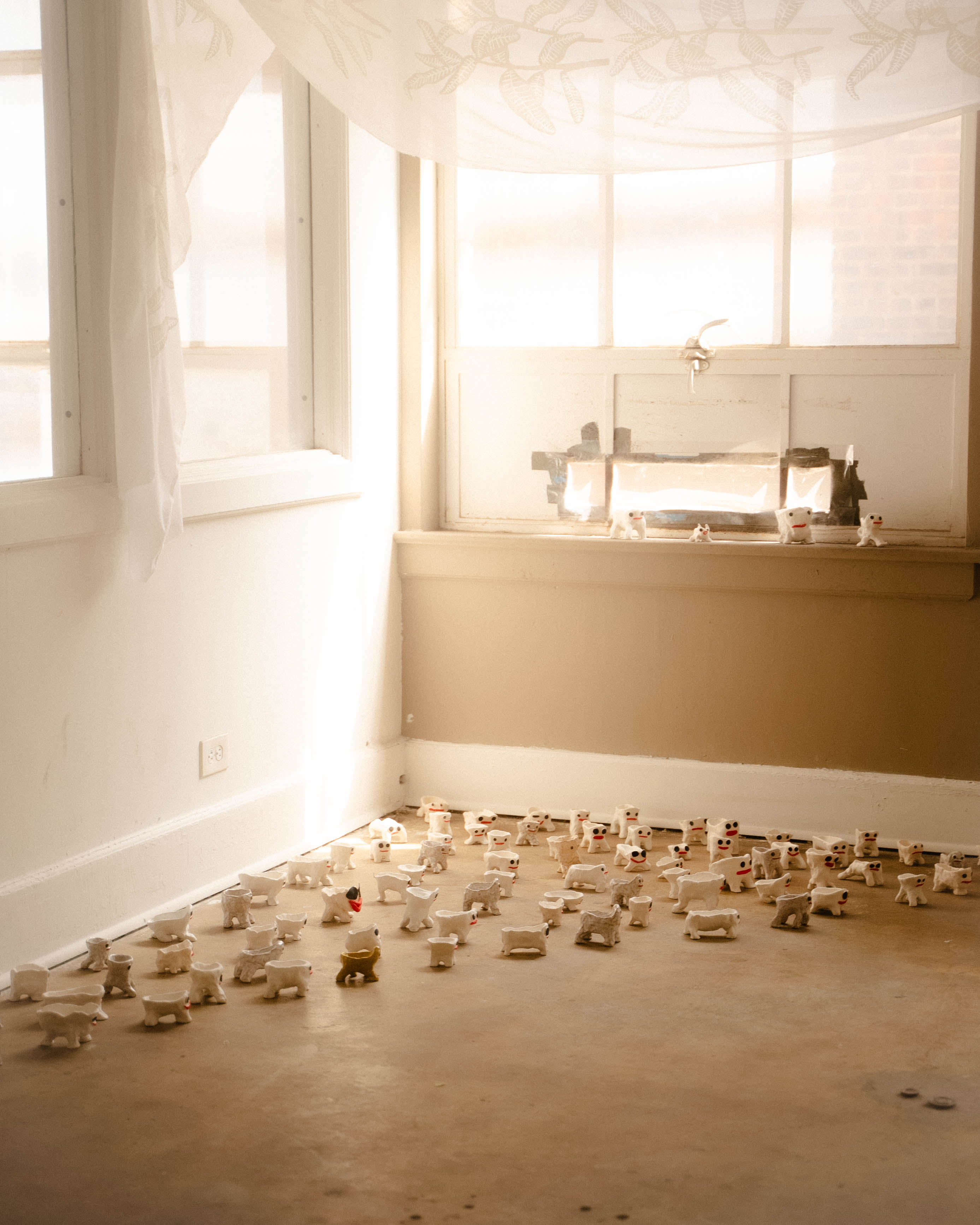
The milkweed seeds are part of the Milkweed Factory, located on the second floor of the installation, which features two concurrent works by the artists Leslie Rogers and Melissa Dettloff. On the door to Dettloff’s room is a sign most Detroiter’s know well: BLIGHT VIOLATION WARNING, with the note “REMOVE TALL WEEDS IN REAR OF HOME.” For The Milkweed Bringers (2024), Dettloff created masses of ceramic-vessel-creatures, like leggy little ghosts, carrying soil and milkweed seeds on their backs. They are encouraged with a fabric banner that drapes across the room, as well as little seed packets for people to take home.
“Despite its name, milkweed isn’t a weed but an essential plant that provides habitat for monarch butterflies and supports other pollinators,” reads the placard for Dettloff’s installation. In Rogers’s work next door, The Lady of the Lake, the Monarch, and the Milkweed Baron, the artist is hand-harvesting milkweed to fill a floating quilt (as milkweed was used during WWII, for floatation devices) as a part of an ongoing performance piece. Massive amounts of seeds fill the corners of this room, even with most of the plant matter enclosed in a tent. These clumps are so large, they start to look like loose scraps of fabric.
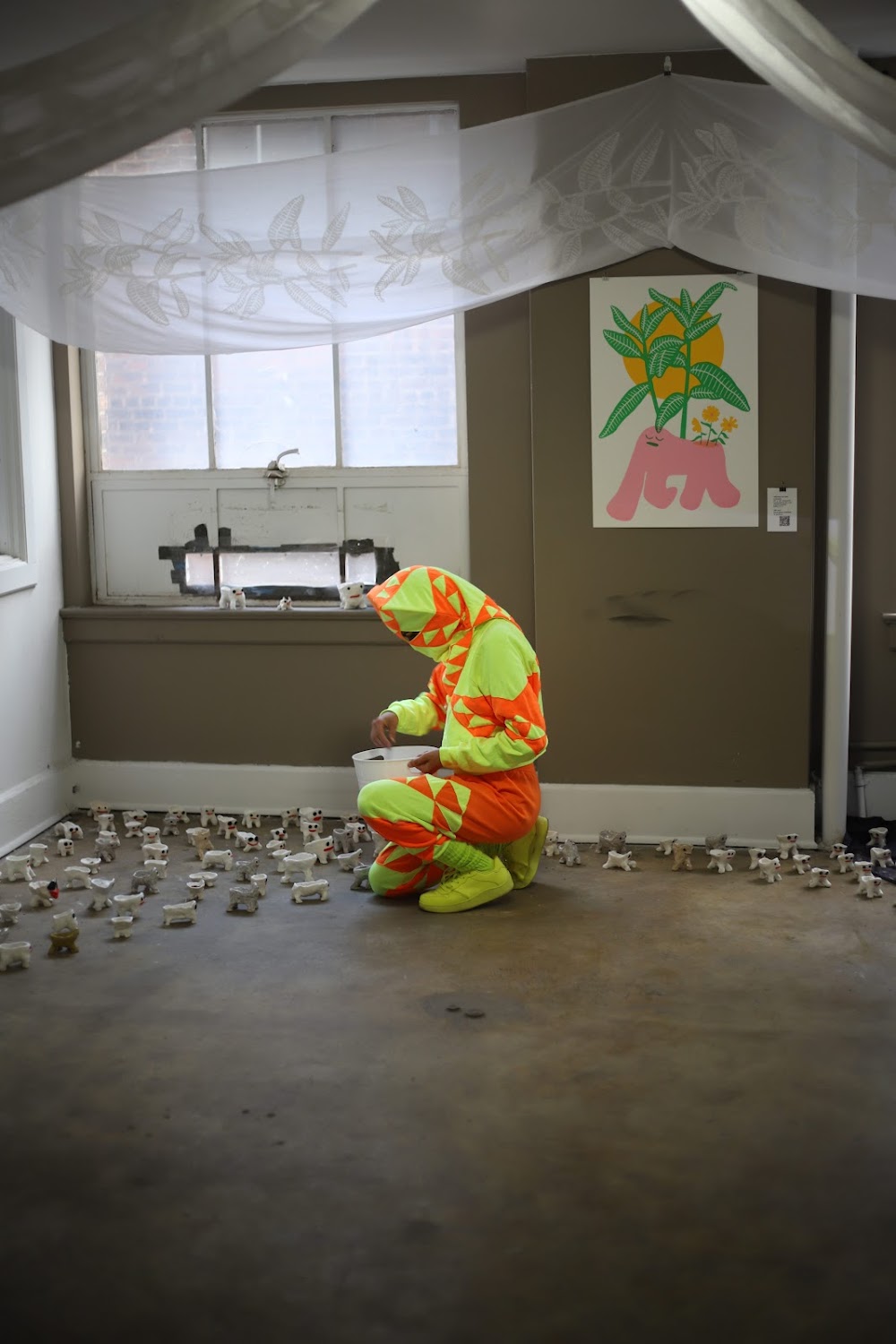

The origin of textile is rooted to the environment, the vegetation in one’s immediate surroundings, and how that unfolded over time through group tradition and ritual. In this group show, not only is the origin of these materials and the range of this ancient craft on full display, but the sheer durability and emotionality of fabric. As Virginia Postrel says in her book The Fabric of Civilization: How Textiles Made the World, from the moment we are born to the moment we die we are wrapped in fabric. It comforts us through blankets, stuffed animals, and bedding; it protects us with coats, seatbelts, and tents.
Both themes come through in Proliferations IV (Wet Turtleneck Fountain, 2024) by Sally Clegg. The sculpture features a bust mannequin, with a clear tube wrapping around the rock-covered base. The base looks like a tiny kiddie pool with white fabric draped over it. The tube pumps the water back up to the top of the mannequin, where water emerges from its throat adorned with shells. The water drips from the largest shell, down the mannequin, slowly deteriorating the white turtleneck its wearing. The mannequin appears to have silicone areolas with little pink doll-heads-as-nipples. It’s almost like the water has traveled down the bodice, and over time it has worn and torn on its left side—the doll-head-as-nipple emerging like some kind of sacred screaming wound. The rest of the garment, in comparison, while uncomfortable looking, is magnificently still intact—even around the lower abdomen where a large conch sell emerges.
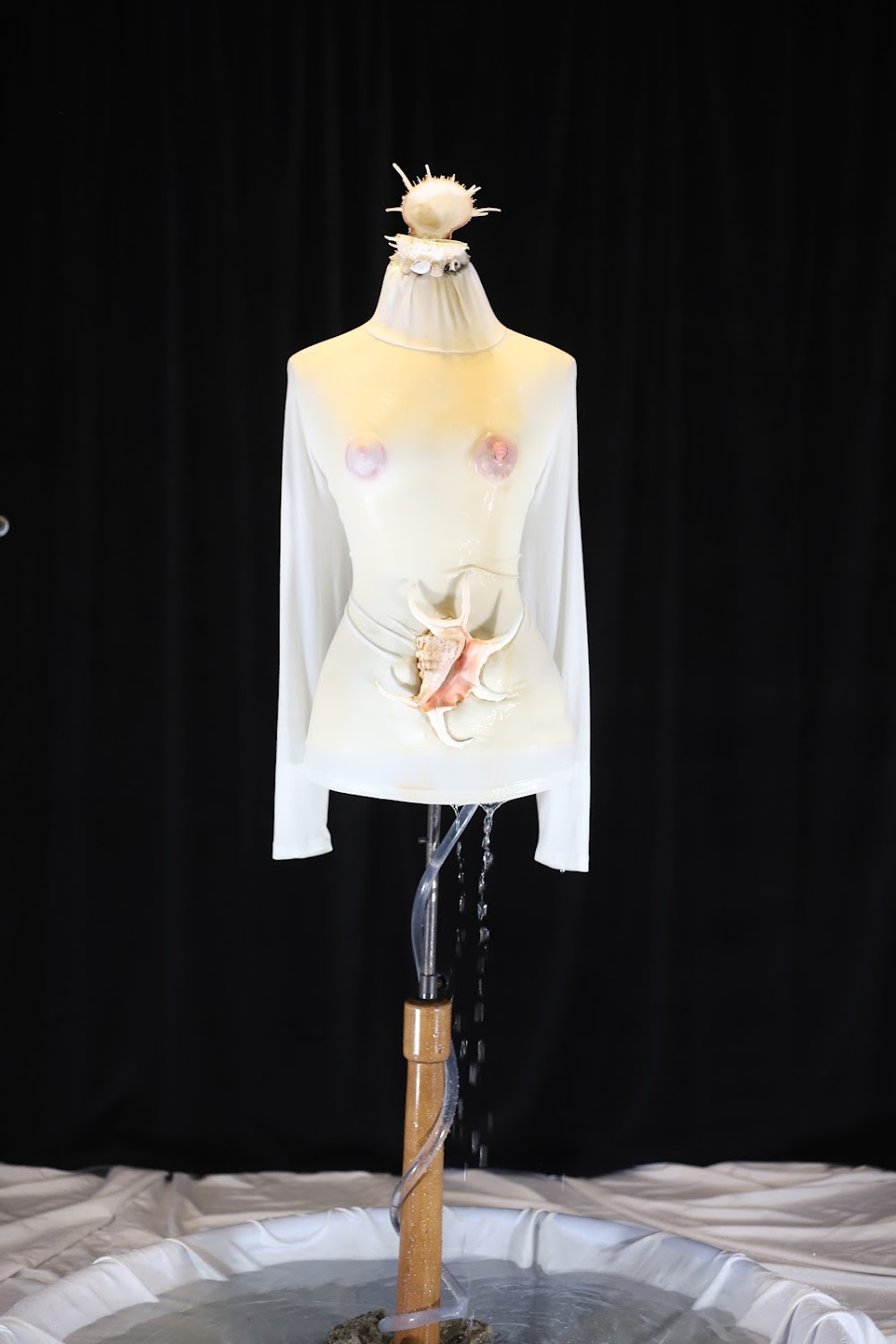
The emotionality comes through in many other installations, like in Taylor Jenkins’s Under Nana’s Feet, where a quilt hangs, suspended for a 360-degree view. Black stamps of little hair barrettes are all over the artwork, and those same black barrettes are gathered underneath spread around the floor. Giving the impression that a ritual, a habit, a moment, a suspended feeling still hangs in the room. A similar emotionality comes through in Robin Wilson’s Bloodlines (2024) and Irene Perez’s Lupe I and Lupe II. As it does in Jessie Rice’s series, in the room labeled Adaptation, where quilts and textiles inspired by the Talmud look like celestial beaded paintings.

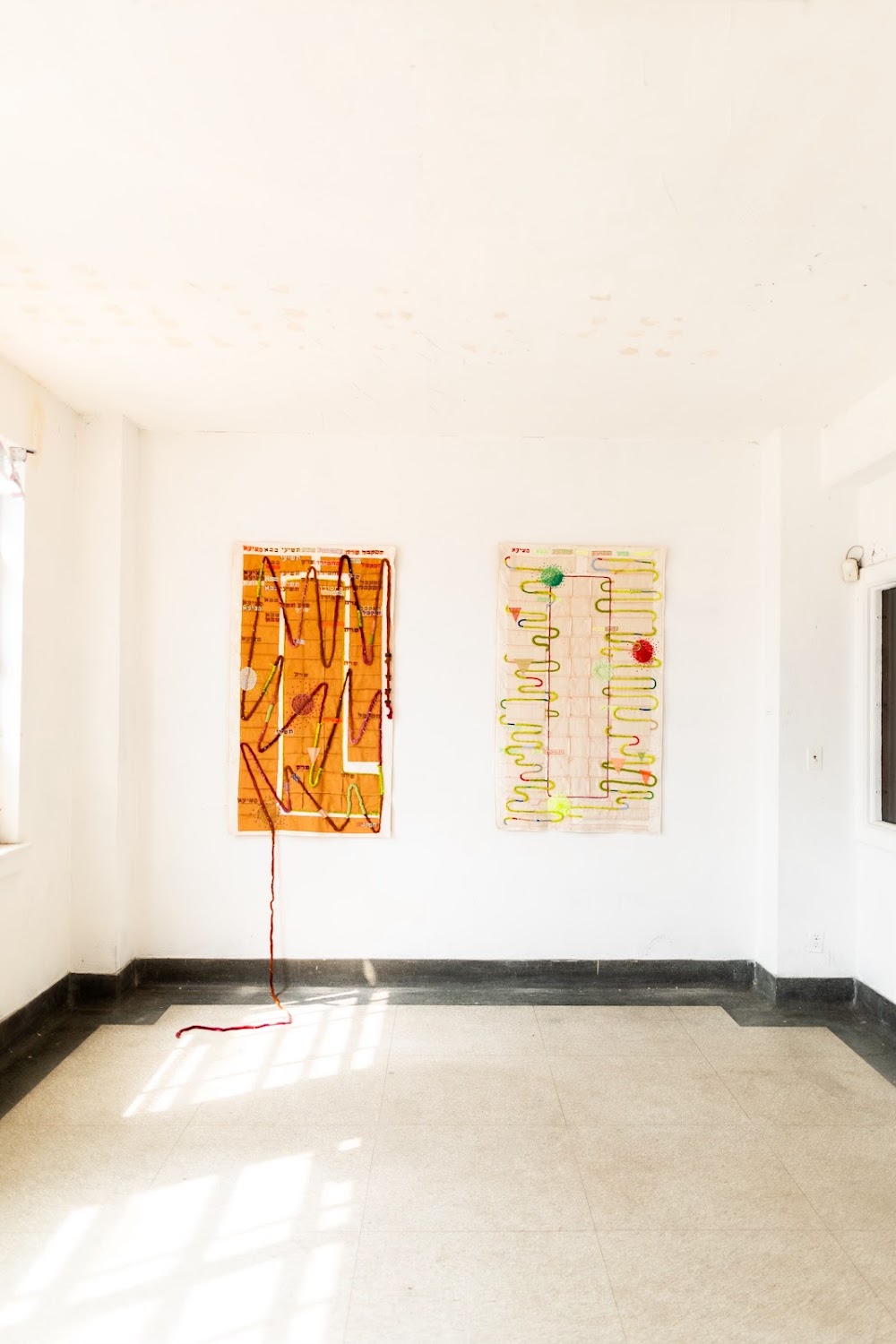
The durability of this artform also carries through the show, like in Hannah VanWingen-Eckertova’s Plastic Bag 1 made of post-consumer plastic netting. Or, in Erin McKenna’s holding pattern with a gigantic, swirling quilted tapestry displayed sideways on an old trampoline. Or, in The Less We Worry by Meg Morley, where two tubular objects (one made of reed, the other cotton and wool) intertwine in an infinite loop until they are loose and free. In Melanie Manos and Kate Shulman’s Bob and Weave, the two artists move together in the video installation while wearing the same large sculptures. In one instance, just as it looks like they’ll rip apart, the fabric stretches and they slingshot towards one another, enacting the meaning of the “fabric of life.”

For Detroit Month of Design, Environment + Microclimates is a group show with artists from Fiber Club* curated by Lisa Waud and Sarah Rose Sharp. The show runs from September 6-29 with extended hours the last three days, Friday September 27 through Sunday September 29.